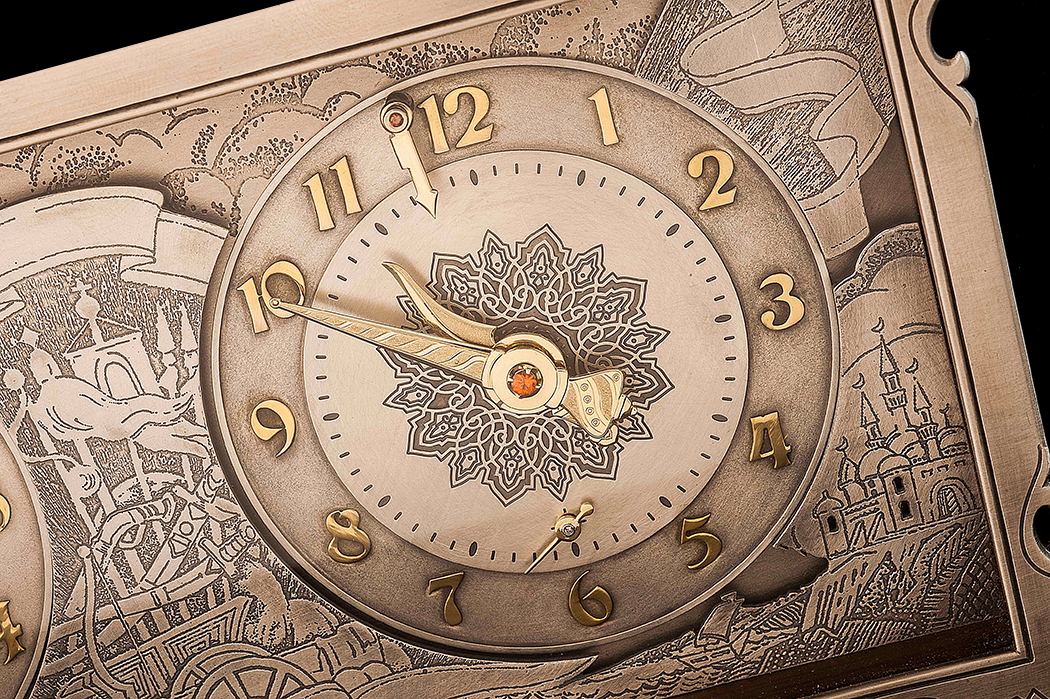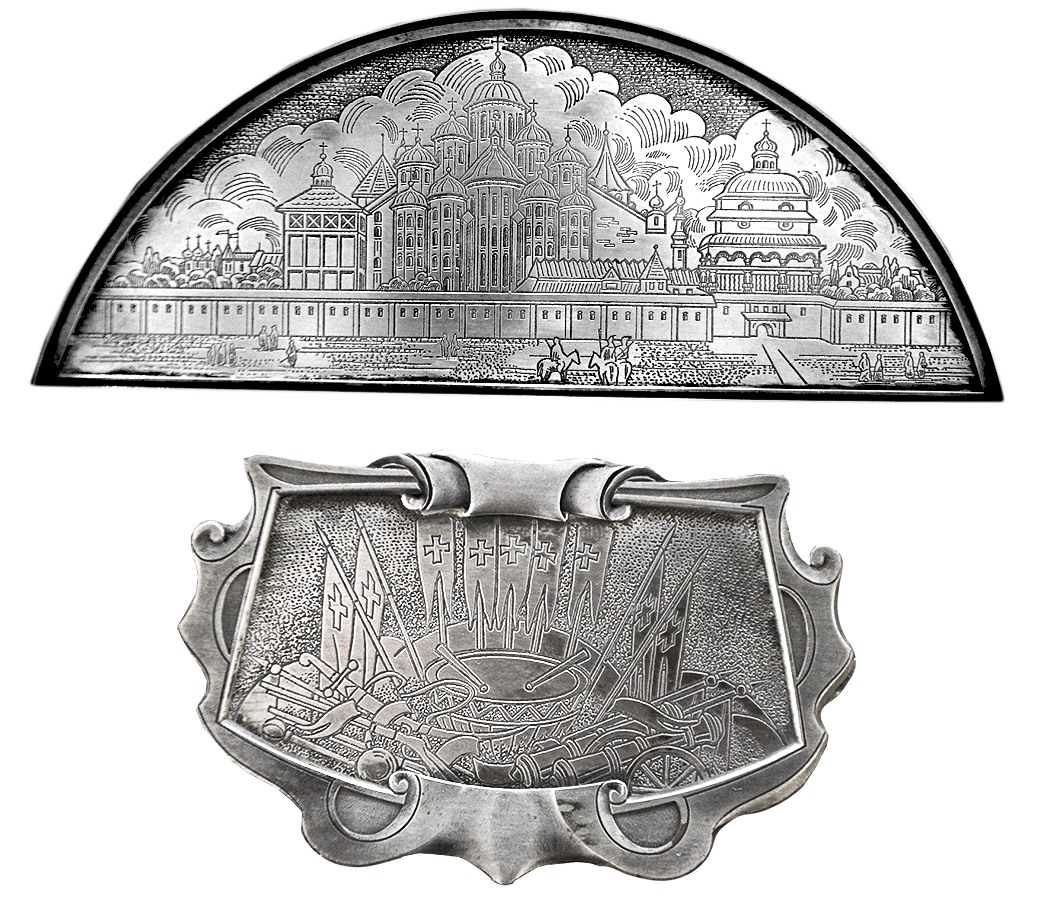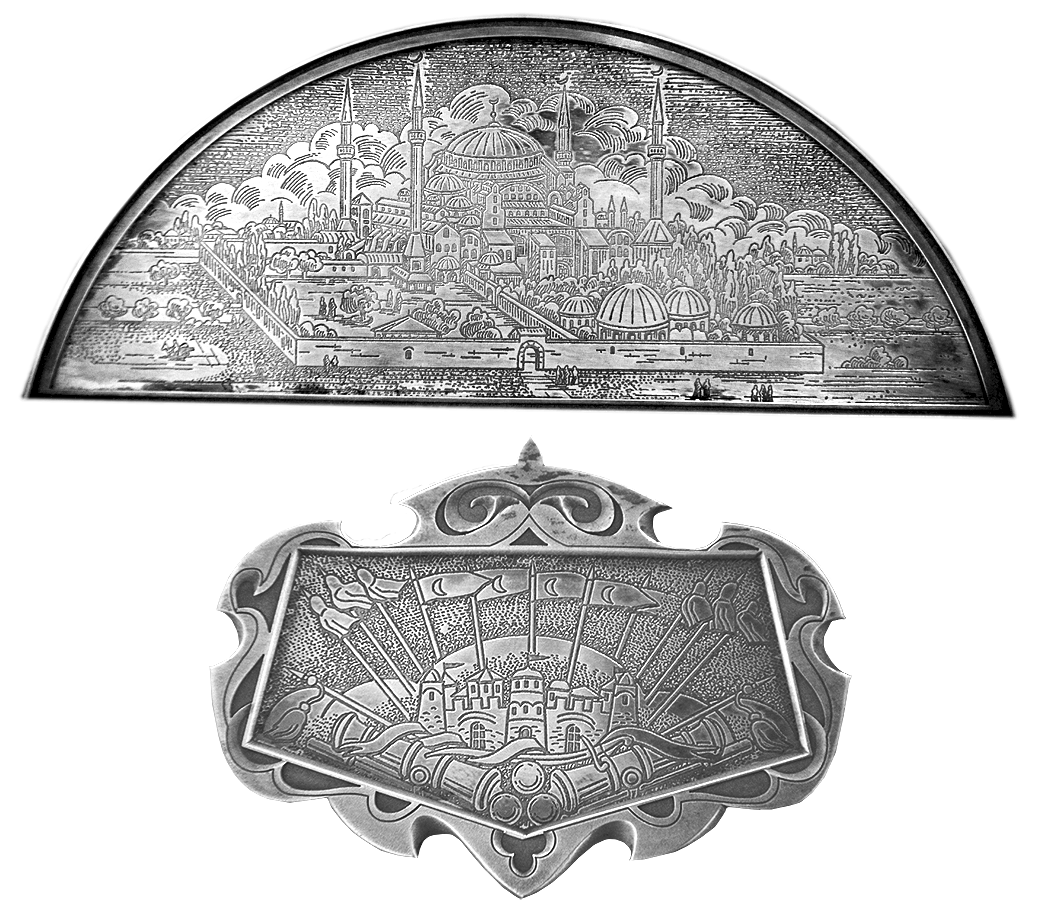Pygmalions of Modernity. Glyptics
Part Three
Russian Style. Becoming
You handsome albums, illustrated
By Fyodor Tolstoy, decorated.
A. S. Pushkin "Eugene Onegin"
From the Russian artisans of the early 19th century, whose work was as high-quality and complex as the one by European masters, Grigory Petrovich Yakimov (1756/58 – 1836/38), engraver, a graduate of the Imperial Academy of Arts and artisan Fedor Krayukhin should be noted.
Since the 1770s, the school of Russian medallion and stone-cutting art began to form. There, along with the image of rulers and generals, artisans strive for simplicity of shape, laconism of composition. This is first discovered in the works of Karl Alexandrovich Leberecht (1749-1827), who arrived in 1769 from Berlin to Russia as a seal carver and became the main medallist of the St. Petersburg mint in 1799.

Karl Leberecht, Medal in honor of G. A. Potemkin.

Karl Leberecht, Johann Baltasar Gass. Medal in honor of A. V. Suvorov.
Artisans of foreign origin, who worked in Russia, made a huge contribution to the formation of the Russian style. In 1772, German artisan Johann Caspar Gottlieb Jaeger was appointed medallist of the St. Petersburg mint, where he worked until the beginning of 1790. In 1776-1778, he taught a class of carving on steel and hard stones at the Academy of Arts.

Samoila Yudin, Johann Caspar Gottlieb Jaeger Medal in memory of the 50th anniversary of the Academy of Sciences.

Johann Caspar Gottlieb Jaeger, Medal in memory of the opening of the monument to Peter I in St. Petersburg.

Johann Caspar Gottlieb Jaeger, the Medal in memory of the transportation of the Thunder Stone for the equestrian monument to Peter the Great.
Pierre-Louis Vernier, French medalist, teacher of the St. Petersburg Academy of Arts; also known as Peter Ludvigovich Vernier.

Pierre-Louis Vernier, Johann Georg Wächter. Medal in memory of the establishment of the Academy of Arts in St. Petersburg.
Georg Heinrich Koenig (1756–1815) was born in the ancient town of Suhl in Thuringia. In Vienna, he became the apprentice of the engraver, where he studied engraving, enameling and modeling of wax. Artisan of the highest qualification: engraver, stone carver, chaser, jeweler, compiler of enamels and glass alloys, connoisseur of coloring compositions. In his works, he not only felt the form as an artist, but was in search of means of expression all the time.
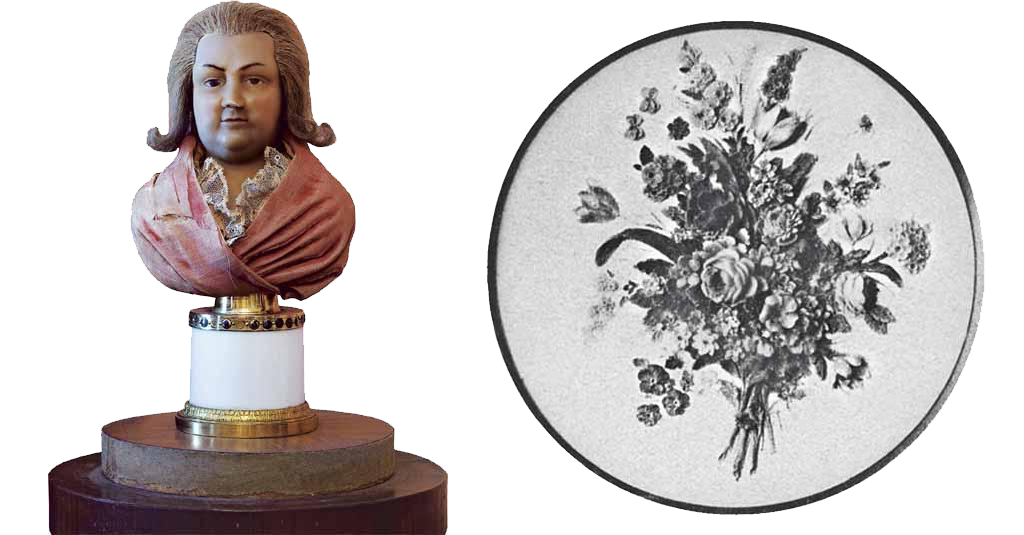
G. Koenig. G. A. Potemkin. wax | G. Koenig. Bouquet of flowers. The 1780s. Ivory, wax.

The interior of the study in the A. N. Tolstoy Apartment Museum. Photo by S. Miturich.
Out of the Russian artisans, which by right, can be considered the founders and legislators of the national stone-cutting and medal school, Peter Egorovich Dobrokhotov (1786-1831) – engraver, professor of the Imperial Academy of Arts, member thereof – taught carving on tough stones. Excellent teacher raised a large number of skilled engravers, which included N. I. Utkin. He executed a large number of gems, including, Portrait of Alexander I (1815), Mercury Bringing the Golden Apple to Paris, portraits of A. V. Suvorov, A. N. Olenin, Nicholas I and many others.

P. E. Dobrohotov. Mercury Bringing the Golden Apple to Paris. 1820.
The State Hermitage Museum..
It is impossible not to note the outstanding achievements in the formation of the Russian stone-cutting, engraving, medal schools below the listed virtuoso specialists. Ivan Anfilovich Shilov (1783/8-1827) had an amazing ability and a rare work ethic, while being a student of the St. Petersburg Academy of Arts. Since 1808, he had begun working at the mint, and in 1810 he received the title of member of Academy of Arts for portrait of Alexander I flawlessly carved on steel. From 1814, he combined his work with teaching at the Academy of Arts.

The medallion in honour of Alexander I. I. A. Shilov. 1816.
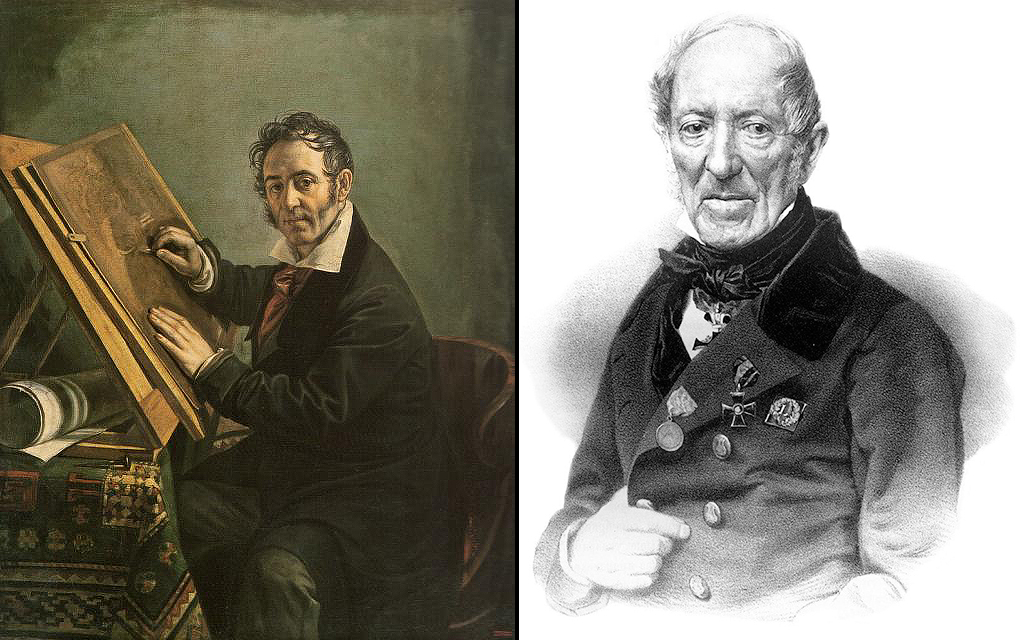
Portrait of the engraver N. I. Utkin 1824, V. A. Tropinin | N. I. Utkin. 1860s.
Nikolai Ivanovich Utkin (1780-1863) was the most skilled of all Russian engravers, the largest artisan of Russian portrait engraving cutter of the first half of the 19th century. He studied at the Academy of Arts from 1785 to 1800, the pupil of A. Y. Radig, since 1796 – I. S. Klauber; he continued his studies abroad in Paris from 1803–1814 in the studio of C. C. Berwick. It was for the engraving John The Baptist Preaching In The Desert Utkin received a gold medal of the Academy of Arts and the right to travel abroad to Paris. He executed the engraving according to his own drawing and worked on it for two years.

John The Baptist Preaching In The Desert.
N. I. Utkin from the original by A. R. Mengs.
In Paris, they were filled with engravings of the Aeneas Saving His Father In The Destruction Of Troy from the painting by Domenichino Zampieri included in the famous edition of the Musée Français, and the excellent portrait of Prince A. B. Kurakin. The first of these works was exhibited at the 1810 Exposition Universelle. The Paris Academy awarded a gold medal to Utkin for this seal, by order of Napoleon; and Emperor Alexander I granted him a ring with diamonds.
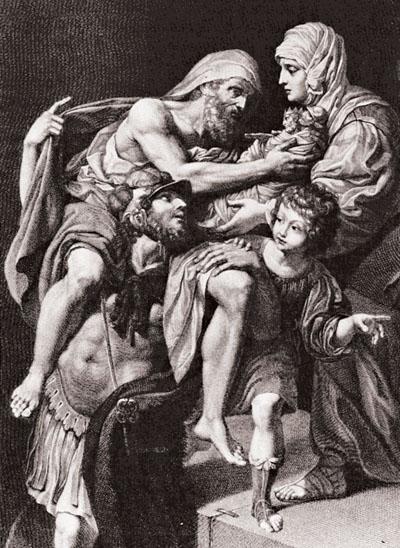
Aeneas Carrying His Father from Burning Troy.
N. I. Utkin from the original by Domenichino Zampieri.
Member of the Academy of Arts since 1810, advisor thereto since 1818, engraver of his Imperial Majesty since 1819, professor of the 3rd degree since 1831, honored professor since 1840.
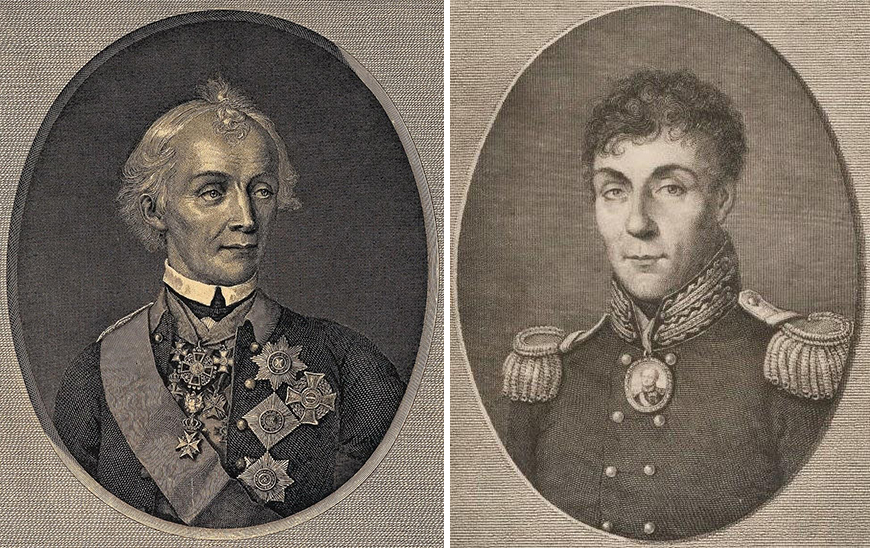
A. V. Suvorov (1818, from the original I. G. Schmidt) | Duke A. A. Arakcheev (1818, from the original by I. F. Wagner)
N. I. Utkin
Member of the Stockholm, Antwerp, Dresden Academy of Arts. Was a lecturer at the Academy of Arts: from 1815 – assistant to I. S. Klauber in the engraving class, from 1817-1850 – head of this class, from 1817 – seals curator in the State Hermitage Museum, from 1843 to 1854 – at the Academy of Arts.
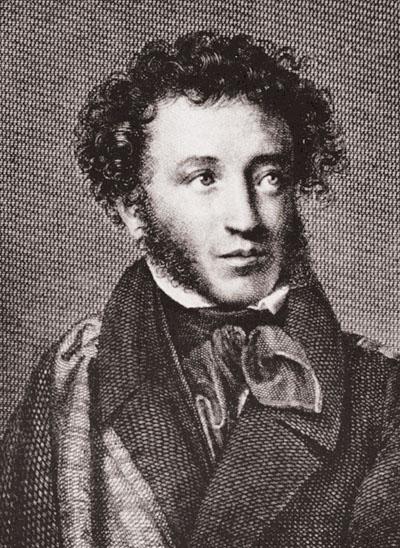
Portrait of A. S. Pushkin. 1827.
N. I. Utkin from the original by O. A. Kiprensky.
By repeatedly changing his style of carving, Utkin constantly returned to the systematic, elegant technique of his teacher, I. S. Klauber; however, by borrowing techniques of carving from other artisans, he did not imitate them blindly, but processed them in his own way, according to the nature of the reproduced storyline and materials of objects presented therein. He engraved faces in one technique, velvet, silk – in another, accessories and other items – in the third one, and for the best of his time he reached a striking color and harmony of the whole. Excellent drawing, brilliant solid stroke, laid without excesses and with the correct calculation, the taste of the performance — these are the advantages of the most important works by N. I. Utkin
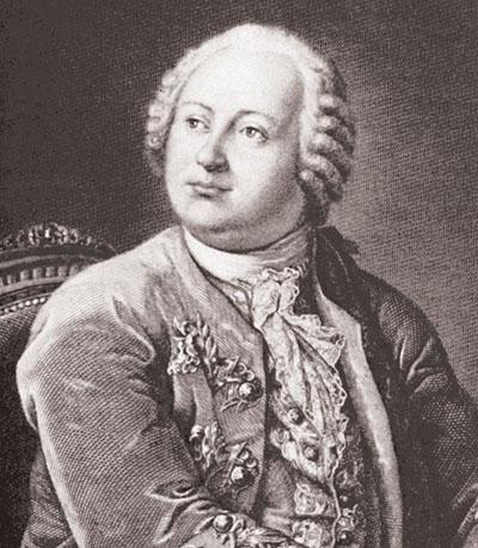
N. I. Utkin. Portrait Of M. V. Lomonosov. From the original by L. S. Miropolsky.
The engraving was made in 1834 to order of the Russian Academy for the three-volume collection of the Lomonosov's works.
Fyodor Petrovich Tolstoy (1783-1873). In the first half of the 19th century the name of Tolstoy – sculptor and medallist, painter and draughtsman – was very popular in Russian society. Pushkin dreamed of illustrations of Tolstoy's work to Eugene Onegin.
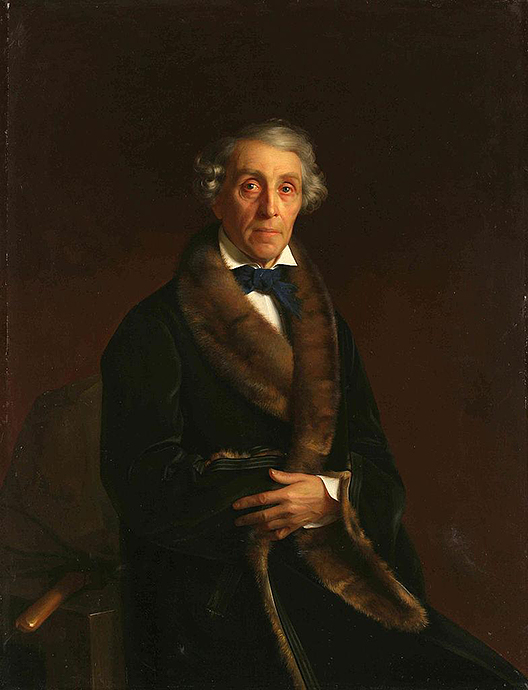
F. P. Tolstoy 1850 Portrait by S. K. Zaryanko.

Rodomysl, the first medal made by Tolstoy "In Memory of the People's Militia"

Medal "In Memory of the People's Militia" F. P. Tolstoy
Since 1804, he began to attend the medalist's class of the Academy of Arts. In 1806, he was appointed to serve in the State Hermitage Museum. In 1809, he was elected an honorary member of the Academy of Arts. In 1810, he was appointed to the Coin Department, on the medal part, in 1828 he was elected the Vice-President of the Academy of Arts. He held this post for the rest of his life, having created a school of medalists. With his wife, A. I. Tolstaya, he showed a great care in the liberation of T. G. Shevchenko from exile and his return to St. Petersburg in 1858.

Battle of Borodino big medal, high relief. | Battle of Borodino small medal, low relief.
F. P. Tolstoy
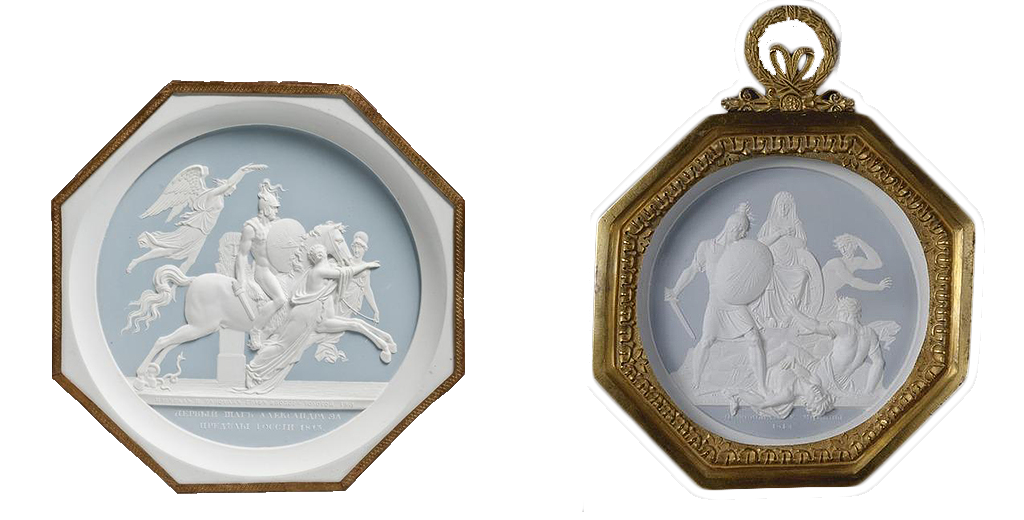
Medallion of The First Step of Alexander I beyond the Russian Boundaries 1813. | Medallion of Liberation Of Moscow.
F. P. Tolstoy

Portrait of Fyodor Petrovich Tolstoy. 1860 T. G. Shevchenko.

Medallions in the interior of the 1820s (Museum House of V. L. Pushkin at Staraya Basmannaya)
The mobility of small sculptures allows you to create entire collections in the interior, occupying a relatively small space. The sculpture of small shapes in a given size is a complete thing, it can carry the signs of monumentality without the need to zoom in. The artisan, as it were, overcomes the lifelessness of stone, steel or copper plate, wax or wood, conquers the material, and creates an artistic image full of life from it.
Through the sculptural form, the content of the sculptural work is revealed, the artisan's idea is conveyed to the viewer. The expressive means are truly endless in realistic art of this three-dimensional plastic shapes.
Fragment of a chess clock. House of Lobortas.
Side bas-reliefs of The Marches on Bosporan chess set. House of Lobortas.

